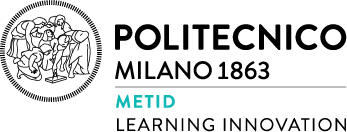The debate over digital transformation has been on the table for years. But now more than ever, the push for a concrete shift is intensifying. Companies are pressing ahead on digital transformation: they’re setting up increasingly automated workstations. Many are reinventing their work, displacing workers and exploiting the full potential of digital collaboration. This change could cause a great crisis in terms of job losses: only in the first half of 2020, around 435 million have been lost (source: International Labor Organization).
To address this crisis, it is necessary to encourage practices of lifelong learning and continuing education to upskill low-skilled workers and to constantly re-train young workers. It is time to implement new strategies and share good practices that focus on learning, to enable workers and students to develop “future-proof” skills.
The Distance Learning (DL) experience introduced in March 2020, due to the COVID-19 outbreak, demonstrated how universities and educational institutions occupy a key role in the digital transformation. In just a few days, the educational scenario was turned upside down: almost all educational institutions were forced to activate emergency distance learning. The entire world of education faced several months of online classes, organized online tests supported by proctoring systems; universities have even held remote graduation ceremonies.
This experience has shown how all people involved in the educational emergency quickly acquired the digital skills the situation required. Despite their complete lack of preparation, many educational institutions managed to guide students throughout their studies, replacing in-person teaching with distance learning. This scenario has further highlighted the urgent need to invest in digital and interactive solutions, also exploiting the potential of Massive Open Online Courses. During this crisis MOOCs have been very important: in a hugely constrained context, their flexibility and adaptability to many situations has been vital.
Politecnico di Milano, like many other universities, runs its own MOOC delivery platform: POK – Polimi Open Knowledge (www.pok.polimi.it), launched in 2014. Since its foundation, the main objective of POK was to integrate the in-person teaching/learning experience with opportunities for asynchronous learning, to bridge the gaps identified in many groups of students. Interest increased in a few years: teachers, researchers and citizens were identified as new targets in addition to students. The number of MOOCs and students enrolled in the platform has steadily grown. POK currently has 70 MOOCs, about 2,000 videos, and a community of about 115,000 enrolled students.


